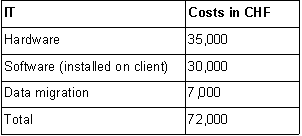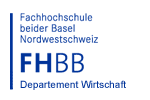ASP software solution for pharmacy and medical practices of Triamun AG
Triamun AG offers software for the healthcare sector, which is primarily aimed at pharmacies and medical practices. This case study shows that the strategy of application service providing for SMEs can represent an appropriate solution – even at point of sale, where rapid reaction times are crucial. The Triamun solution is a collaborative platform to which other parties in the health sector (clearing offices, pharmaceuticals wholesalers, laboratories, etc.) are electronically connected.
Inhaltsverzeichnis
1. The companyASP solution, “Thin Client Computing“
2. E-Business strategy
triamun practice, triamun prescription, triamun pharmacy, point of sale, tender criteria
3. Integration solution
ASP approach, integration, process view, electronic prescription, POS system, IT architecture, 3-tier architecture
4. Implementation
Project management
5. Operation
Investment costs, “licence model“, profitability
6. Success factors
Network effects
1. The company
Triamun AG was founded in August 2000 as a joint venture between the Galenica Group and the business consultancy Ludwig & Partner. The company develops, sells and implements software solutions for practice and pharmacy management.
The software range of Triamun AG is based on an ASP solution (Application Service Provider), for which the user merely requires a standard web browser. No special software is installed on the client’s system. The software supports all operation sequences within pharmacies and medical practices. The system operated by Triamun guarantees a data and information exchange between the partners in the healthcare sector based on a central database. The program modules have been developed in close cooperation with doctors, pharmacies and their teams of employees.
Background:
The idea of creating an ASP software solution for medical practices and pharmacies which facilitates the electronic data exchange with pharmaceutical wholesalers, health insurance companies and laboratories behind the scenes was conceived in February 2000. Ludwig & Partner put the proposal to the Galenica Group, which operates an extensive network of pharmacies in Switzerland and was interested in an integrated software package. Triamun AG was formed.
To develop the Triamun solution for the healthcare sector, Triamun entered into a joint venture with Ramco.
Industry sector, product and target group
The business segment of the healthcare sector is facing increased cost pressure and at the same time demands for quality assurance with respect to medical and pharmaceutical services. Doctors and pharmacists are no longer isolated providers of products or services which compete with each other. Nowadays they have to optimally interlink various value chains and market offerings in order to be able to work cost-effectively. Medical practices and pharmacies are companies with high costs in relation to the service rendered. There are over 1,600 pharmacies in Switzerland, of which at least 1,500 utilise IT solutions. One of their objectives must therefore be to use IT tools selectively to cut costs.
The Triamun system is an ASP solution in which the total application volume, which was traditionally installed on a client’s system, is outsourced to a central server. The software is no longer installed in the pharmacy or practice, but is called up on the hosting operator’s server. Access is carried out via a standard web browser and a fast Internet connection. This modern approach to software management is also referred to as “Thin Client Computing”.
Corporate vision:
Triamun pursues the following vision:
The long-term goal is to provide a software platform for the whole healthcare sectore. In the last development phase patients, hospitals and laboratories are also to be given access in addition to doctors and pharmacies.
2. E-Business strategy
The Triamun case study evolved from interviews with various parties who were involved in the development of the system, namely employees of GaleniCare (network of pharmacies), from Triamun (software provider), from Ramco (software developer) and the pilot pharmacy “zum wilde Maa”, which provided information about its experiences during the system’s launch. The pilot pharmacy is a relatively large pharmacy, which deals with around 200 prescriptions from customers per day.
Importance of E-Business in medical practices and pharmacies:
The use of IT tools has no strategic importance in medical practices and pharmacies. IT is only a means of handling processes efficiently and thus saving costs and guaranteeing quality. For the Galenica Group the area-wide use of Triamun software promises more transparency and therefore a better basis for managing the GaleniCare network of pharmacies.
E-Business fields of application: practice and pharmacy:
triamun®practice for doctors: patient management
The Triamun software module for doctors supports all arising processes from appointment-making, including an agenda for results registration, and warehouse management through to billing of services to patients or the health insurance company. The following functions are included in the module: practice organisation, patient management, customer relations, master data, results registration, medical documentation, prescription, service billing, materials management, statistics (crystal report), network capabilities, system support and security.
triamun®prescription
Data may be exchanged between doctor and pharmacy in the form of an electronic prescription, inclusive of a feedback function. In this area data integration is carried out through the joint use of the appropriate prescription data.
Additional functionality in the case of both solutions is the traditional ERP functionality, in the form of an integrated finance package, in which all transactions are automatically entered. The fully integrated finance module (triamun®finance) for bookkeeping is only used by two customers at present. Most doctors and pharmacies work with trustees who carry out bookkeeping for them.
triamun®pharmacy for pharmacies: POS sales
The module for pharmacies supports point-of-sale transactions (POS) from cash sales (incl. online checking of credit cards) and invoice and prescription sales as well as full dossier and warehouse management, ordering, and billing to customers or health insurance company. Additional functionalities such as foreign currency billing, substitution and interaction check of medicines, are integrated software components. The special requirement of this application is the synchronised support of the sales process between pharmacist and customer: functions and data must be available without a time delay. The sales database is mainly based on the master article list of GalDat (more on this in Section 10.3.3). In addition, new articles can also be recorded. The following functions are included in the module: master data, sales, patient management, customer relations, medical/pharmaceutical documentation, POS, accounting and dunning, materials management, statistics, system support, security and access rights, integration of master data concerning outside suppliers and availabilities (for the wholesalers Galexis, AmedisUE, Voigt and Unione).
Partners for developing the Triamun system:
To search for a development partner, Triamun issued a call for tenders, in which well-known ERP providers participated, such as, e.g., SAP, Baan and Peoplesoft. The tender criteria were above all the anticipated development costs, subsequent operative costs and scaling possibilities. Ramco Systems submitted the best bid, which above convinced the panel due to the basic technology used.
Ramco Systems
Ramco Systems, with more than 1,000 installations in 30 countries and 70,000 users, is one of the world’s leading manufacturers of component-based corporate software. The company was founded in 1989, is listed on the stock market and has 1,700 employees worldwide in 19 branches. Around 80 employees work at the European headquarters in Basle. Ramco Systems has a stable domestic market in the textiles and cement sectors in India. The ERP solution was originally developed to satisfy the internal IT needs of Ramco branches. The ERP software which thus evolved is meanwhile available worldwide. A special strength of the company is that the cash flow from today’s perspective is assured in the long term by prospective business transactions in the cement market. Tramun and Ramco set up a joint venture for the joint development work on the Triamun platform.
3. Integration solution
The Triamun platform represents a new generation in sectoral software, which has so far not been widely applied from a technological point of view. The ASP approach (no local software apart from the Windows operating system) has been rigorously applied in the case of this solution. This changes the basic requirements of the IT. The local client is only used as an access window. The constantly available, high-performance Internet connection is assigned an important role. In the event that the connection is broken, users have no functionalities at their disposal, although, on the other hand, decentralised users are released from software maintenance and updates.
The following integration takes place via the Triamun solution:
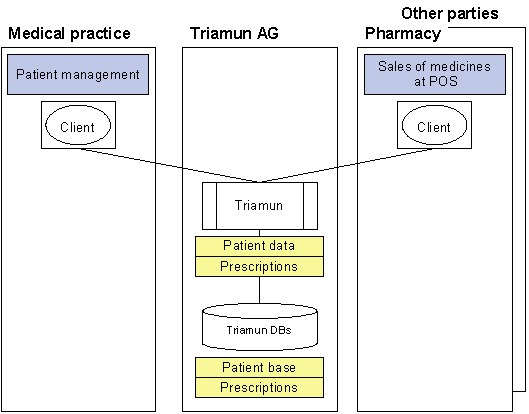
Fig. 3.1: Integration in the Triamun solution
Business perspective:
The Triamun system is a sectoral solution for the healthcare sector and is to facilitate electronic data exchange between all connected parties in its last phase of development. The main modules, which are examined in this case study, are the “triamun®practice“ module for medical practices and the “triamun®pharmacy“ module for pharmacies. In July 2003, 15 customers were actively using the system (13 doctors and 2 pharmacies). 20 contracts have already been concluded in total. A big increase in user numbers is planned for the coming years.
Most parties in the healthcare sector are amalgamated in association-type structures. The Ofac (www.ofac.ch) is the professional association of Swiss pharmacists, which bills the health insurance companies for services rendered. The Ofac has approximately 1,200 member pharmacies in the whole of Switzerlnd, which accounts for two-thirds of the total number of pharmacies in existence. In 2000, it issued close to 8 million invoices with a total sum of CHF 1.5 billion. In the case of doctors, the Doctors’ Collection Office bills the health insurance companies for their services. The santésuisse is the industrial federation of Swiss health insurers. Due to the association-type organisation, not all parties have to be connected individually to Triamun. Ofac and the Doctors’ Collection Office act as a clearing office between their members and the health insurance companies as bodies that bill services.
Process view:
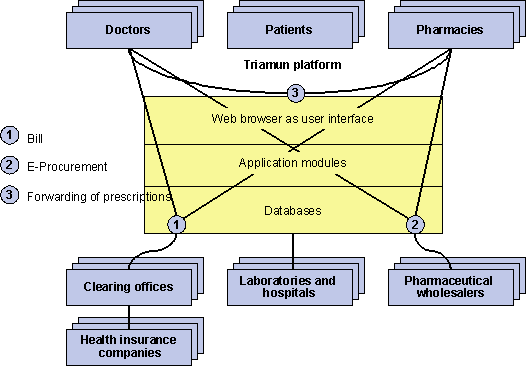
Fig. 3.2: Processes which are integrated via the Triamun platform
From the point of view of business processes, three key processes must be pointed out above all, namely clearing, the purchase of medicines (E-Procurement) and the electronic forwarding of prescription data (cf. Fig. 3.2).
Clearing
Doctors’ bills (above all for examinations; in the case of self-dispensing doctors also medicines) and pharmacies bills (medicines) are transferred to the clearing offices electronically via the platform. The clearing offices carry out the task of sending the bills to the appropriate health insurance company or to the patient. Clearing offices are e.g. Ofac or IFAK for pharmacies and the Doctors’ Collection Office or MediData for doctors. Even if pharmacies’ bills are sent to the health insurance company electronically via Ofac, a paper version of the prescription still has to be sent to the health insurance company by post. The doctors’ bills are sent to the patient as a paper version or electronically to the Doctors’ Collection Office, which checks the contents.
E-Procurement
The orders from doctors and pharmacies for medicines are sent to the pharmaceutical wholesalers, e.g. to Galexis (www.e-galexis.com) or to AmedisUE (www.amedis.ch). Galexis has a market share of more than 50% in Switzerland. The Triamun system allows access to personal customer conditions (special prices) and an online availability check, so that the person ordering knows after completing the order when and at what price he/she will receive the goods. In order to obtain better conditions, there are pharmacies who join forces and submit collective orders. An important basis is the standard medicines database “GalData”, which is stored in the system. In this database each article for Switzerland is identified with a clear pharma code. The GalData database is maintained and operated by e-mediat (www.e-mediat.ch). e-medicat is a Swiss subsidiary of Triamun and also belongs to the Galenica Group. All companies which require pharmaceutical data receive this master data on a CD. As soon as a new medicine comes onto the market in Switzerland, it is entered in GalDat and is then available to all Triamun users. The connection of wholesalers is effected via an XML interface. As no opposing political goals of the connected partners stood in the way, this integration was relatively easy to complete.
Forwarding of prescriptions (electronic prescription)
The “triamun®prescription“ module fulfils one special function. It allows the electronic transmission of the prescription issued by the doctor to the pharmacy. Patients still decide which pharmacy they want to go to. If the pharmacy uses Triamun software and the doctor has released the data, the prescription is held in the system ready for sale. The pharmacies can still adjust the prescription data. Patients have the choice of whether they want their data to be released for use in Triamun. In addition, the doctor decides whether and for which pharmacies he/she wants to make the prescription data available The pharmacy charges a quarterly fee (dossier charge) for recording and electronically billing the health insurance companies. The patients therefore receive an incentive to always shop at the same pharmacy. The process of electronic prescription transfer has already been implemented technically, but is still not being used as of July 2003.
Application view:
Owing to the ASP architecture, the Triamun application represents none of the traditional approaches of internal or external integration. Through the joint use of the same platform and the same master data, users are seamlessly connected with each other without adjustments having to be made to decentralised information systems. The joint use of data is therefore the most important integrative aspect.
The most important data that are used jointly are the GalDat database (pharmaceutical articles) and the TarMed table (tariff system for billing (tax points)). The system also allows the joint use of data for the self-recorded patient base.
GalDat has caught on throughout Switzerland as the standard format for POS systems, commodity control and electronic billing. In addition to the generally valid information, GalDat also contains wholesaler-specific data, such as, for example, the availability of products or campaigns. GalDat contains approximately 95,000 articles. The database contains EAN codes, pharma codes and all other standard codes. It is the reference file for orders (VSSG, EDIFACT) and bills (clearing offices and health insurers).
The following databases are available as master data on the Triamun platform: GalDat, 26 Canton Physician Service Master Data, Tax Point Values for Physician Services, TarMed Service (Physician Services), TarMed Service Validation, Posology Database for Drug Usage, Swiss Holiday Master, Diagnose Master, Exchange Rate, Physician Master, Swiss Bank Master, Laboratory Service, Swiss postcode and PLACE Master, ISO Country Master, Supplier Master, Insurance Master. The Triamun platform forwards data to participants in the required formats. In this case, a data conversion sometimes takes place from one partner to another (e.g. transfer of EDI in XML).
The main advantages of the ASP architecture are the local access of all authorised persons, data hierarchy through clear access privileges, data security due to the underlying security concept, topicality and accuracy of information, integrity of data, i.e. the guarantee that data is only filed once and no twin tracking. The system is programmed in English and has full multilingual capability.
IT architecture:
The Triamun software is based on 3-tier architecture (cf. Fig. 3.3): the client of the user accesses the web server in the Sunrise Hosting Center. Access is carried out either using an SSL encrypted connection via the public Internet or via a VPM connection (Virtual Private Network). The program logic is located on the application server. Master data and user data are stored on a special database server. The user is identified via the device’s MAC address on which the Triamun software is started. The MAC address is a clear, worldwide identification number for network cards and is deposited in the system for each authorised computer.
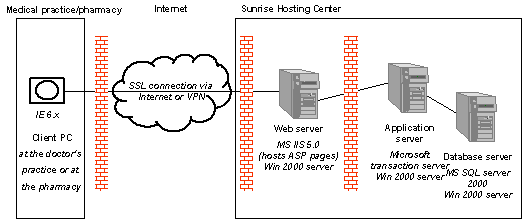
Fig. 3.3: Access from the browser of the client PC to the Triamun ASP solution
The system has been designed for a high number of end users and transactions. It is scaleable up to 30,000 users and 10,000 orders per month. A key factor is high system availability, as the appliations are used for sales support at the POS. All software modules are implemented in a modular way. The access privileges are implemented via a role concept. Restrictions for certain users can be allocated both on the level of patient data and with respect to certain content types.
Special technical challenges were the integration of different locally processed tasks, since the called application logic is located on the server. Thus, the control of barcode readers, printing functions for local printers and the integration of the online checking of credit cards in the case of 3-C systems (for payment in the pharmacy) were difficult hurdles.
Within the scope of connection to interfaces for other devices and programs, the following third-party products were also integrated: Caroline barcode (for scanning barcodes), V50 for purchase order transmission (established protocol for ordering medicines from the pharmaceutical wholesaler), Microsoft Outlook (comparison with the Triamun agenda), and MS Word and 3-C Systems (for online credit card billing).
Data exchange is carried out using different formats, such as, e.g., normal ASCII files, EDI (clearing offices), XML (wholesalers) or HL7 (laboratories). Fig. 10.4 shows excerpts from files in the two formats EDI and XML.

Fig. 3.4: Examples for different exchange formats with clearing offices and wholesalers
4. Implementation
The people in charge of the project chose the “zum wilde Maa” pharmacy in Basle as a pilot candidate for the initial launch of the Triamun system.
Software solution/programming:
The processes to be imaged were recorded together with potential, future users (mainly doctors and pharmacists) over a period of eighteen months and recorded as a specification. In the intensive phase of programming up to 35 employees from Ramco were involved in the programming work.
Project management and redesign of processes:
Urs Mathis took over project management for GaleniCare at the first GaleniCare pharmacy in which the Triamun system was launched in December 2002. He monitored project progress, whether deadlines were being met and kept a list with suggestions for improvements. Together with the entire pharmacy team, training documents were developed for all members of staff. The training of users took place in February 2003. On 13 March, the old pharmacy system was replaced by the Triamun solution. There was no parallel operation of the new and old system. The launch led to an enormous increase in workload for employees. In the case of many of the functions, it only became apparent when the system was up and running that they did not work yet or did not work as they were supposed to. The new system is in some cases more complicated than the old one. The steps for calling functions were sometimes tedious, which lead to waiting times in the presence of customers. A lot more information is displayed on the screen at the same time (the screens for the old solution were more basic and it was therefore easier to gain an overview of the information)
Initially, users had to familiarise themselves with the general functions of Microsoft Windows. Many of the required functions could not be found by employees in the beginning (e.g. printing out labels). The high demands placed on employees as a result of having to learn how to operate the system and detect faults at the same time meant that their workload increased noticeably. Two employees from Triamun were present in the pharmacy each day for almost a month in order to offer assistance. If the system was temporarily not available or the sought functions could not be found within a time which was acceptable to customers, the sales had to be recorded manually and reentered later.
In May, (two months after the launch) a three-day workshop was carried out at Triamun with the pharmacy staff responsible, in which the entire system was discussed in terms of suggestions for improvement. A working group consisting of IT specialist from GaleniCare and Triamun employees which deals with ongoing improvements to the Triamun system, emerged from this event. Three months after the launch, there were still a long list with outstanding items. According to project participants, Ramco reacts very quickly to requests, makes adjustments and offers assistance. The strategic goal is still to equip 120 branches of GaleniCare with Triamun by 2007.
5. Operation
Maintenance of the platform is distributed over different parties. Technical maintenance of the server is carried out by the Sunrise hosting center. Maintenance and ongoing improvement of applications and databases is carried out by Ramco. Maintenance of the pilot customer is carried out by staff at Triamun and GaleniCare.
Costs and benefits for the user:
Tab. 5.1 lists the typical investment costs for the procurement of a pharmacy system for a medium-sized pharmacy with 7 work stations. On top of this, there are also variable training costs. Up to now, software was purchased, installed and then used for as long as it satisfied requirements.
The Triamun solution follows a licence model, in which a monthly fee is levied for use of the software and part of the maintenance costs. The maintenance fee guarantees ongoing adjustments to the system. Tab. 5.2 lists the ongoing costs that are incurred in such a “licence model“ by pharmacists or medical practices. The pharmacy solution is more comprehensive and therefore also more expensive. The costs roughly correspond to the prices which are typical on the market for such software packages.

The costs for the licence model depend on the number of work stations or users. In addition to the licence model, Triamun offers doctors another membership model, where the software licences (until now) are paid once (from CHF 8,000, depending on the number of users) and then a monthly maintenance fee of CHF 100 is incurred. The costs are balanced out by various savings potential for doctors and pharmacists. These include, e.g., a reduction in system interfaces, the creation of a basis for a more efficient practice and pharmacy management with defined processes and a reduction in double tracking when recording data. Through the envisaged, electronic data exchange between different parties in the healthcare sector, benefits would be achieved across the whole system.
Profitability of the solution for the software provider:
The Galenica Group opted for the cooperation with respect to development of the Triamun platform for the purposes of an nationwide use in their pharmacies. In addition, the solution is also available on the free market. From today’s perspective the increased time expenditure outweights the benefits for those involved. In the long term an increase in benefit is expected due to the deployment of the solution in all pharmacies in the GaleniCare group, especially in the area of controlling (sales/purchasing figures).
Triamun generates its income with the aforementioned licence fees and with services (data migration and training). The decision to invest in the Triamun platform was made based on a business case. The investment appraisal predicted a break-even after three years. In the long term Triamun will be profitable.
Ramco is connected as a partner via the joint venture. Ramco has thereby participated in the development costs on a share basis. The costs for the whole system development roughly correspond to the original share capital of Triamun, which was estimated at CHF 10.5.
6. Success factors
Specialities of the solution:
The ASP approach (no local software apart from the Windows operating system) has been consistently applied in the Triamun solution. This changes the requirements of the IT. The constantly available high-performance Internet connection takes on a central importance. The Thin Client Approach has the advantage that program changes are available to all users immediately. Decentralised program updates are no longer necessary.
The people in charge of the project see the ASP model as the future for SME industrial software, although the pilot phase of the pharmacy in Basle in particular makes it very clear that real benefit effects only arise if a lot of parties are connected to the system (network effects). The increased time expenditure is still significantly outweighing the benefits. Many problems which occurred during the launch were attributable to necessary admustments to the screens and function processes rather than the ASP operation. The special requirement of the pharmacy solution is the synchronised support of the sales process between pharmacist and customer: functions and data must be available without a time delay. The fact that the business-related data is now located on a central server does not worry the employees interviewed. Confidence in the hosting solution is high in this respect.
Changes:
The launch of a system that is completely different to its predecessor operation-wise is difficult. The employees had to learn how to use the Windows functionalities (the old system was DOS-based) and the Triamun functionalities simultaneously. The old DOS application was a lot simpler in terms of the number of functions and therefore easier to use. The system had still not proved its worth in practice at the time of the launch, which is, however, also not expected of a pilot project. In addition to learning new functions, faults and improvement suggestions also had to be repeatedly reported to the software developer. One example is the process for marking new products (packets of medicines) with price labels. The labels are issued by the system on a special printer per received order. The produced labels did not appear on the printer in alphabetical order to start with, and were all mixed up, which caused more work with regard to sticking labels on packaging.
Changes have also been caused by the change to an ASP solution. The pharmacies now only have to ensure an operational Windows computer with a constant Internet connection. Software is not stored locally. Difficulties arise with regard to connection problems, where it is unclear what has caused them (e.g. errors in the network card cause breaks in the connection). In this case, it is difficult to define responsibilities.
Lessons learned:
Political interests have a crucial influence on the success of an industry-wide software solution. The Triamun platform has good prospects for success in this case, as many of the potential users come from the Galenica Group itself. This statement is supported by the difficulties which have arisen concerning the integration of external partners. While the pharmaceutical wholesalers were “simply” connected (Galexis belongs to the Galenica Group, for example), integration of the clearing center turned out to be relatively difficult. The launch of the system in the pilot pharmacy took place following pressure from the GaleniCare. There was no actual need for the launch of a new system at the pilot pharmacy.
In hindsight, it is clear that a longer test phase with only one pilot customer should be carried out. The employees of the pharmacy should have been involved in the development phase at an earlier stage. In the day-to-day business things happen which cannot be anticipated by the developers. The person-machine interface is a big challenge at the end of the day. There are existing systems which have been in use for years to which employees have become accustomed. The Triamun system is a different story. In the old systems an order could be simply deleted. This is no longer possible in Triamun, as the bookkeeping processes function in an integrated way and a deletion has an effect on other function modules. A booking now has to be carefully cancelled. The first users will still have a considerable influence over the months and years to come on improving operation of the system on an ongoing basis.
Outlook:
The long-term expectation of the launch of an industry-wide software system is the cost reduction in the national healthcare sector. The main beneficiaries of the integration via the platform and of the standardised, electronic data exchange will be the health insurance companies. It is to be hoped that this will have a positive effect on the insurance premiums. Thus, it is conceivable, for example, that patients will receive premium reductions in future if they allow their health insurance access to their Triamun data.
It is anticipated that within short time free, independent pharmacies will no longer exist. The cost pressure in the healthcare sector is such that pharmacies will have to amalgamate into groups in order to benefit from more favourable purchasing conditions. The use of Triamun also offers advantages for such alliances. It remains to be seen whether the system will also catch on outside the Galenica Group.

